5 steps to improve your future digital marketing capabilities
.png/fit-in/700x9999/filters:no_upscale())
Developing business digital marketing capabilities, staff skills and competences has become vital to marketing success now that digital channels are the primary way for us to reach target audiences and encourage them to buy for many businesses. To help businesses benchmark their marketing, I'm delighted that Smart Insights could again team up with Technology for Marketing and E-commerce Expo to survey the latest trends in managing digital marketing and the marketing technology. The research report is based on 403 responses with the majority of participants from the United Kingdom or the United States and over three quarters of manager-level.
I'm looking forward to presenting the results in the Future of Marketing Theatre at Technology for Marketing in September. Here I'll provide a preview of our main findings and the implications for marketers and businesses. You can download the report and see more analysis in my Smart Insights article summarizing Key digital marketing trends and innovations for 2024.
The dominance of digital marketing
As an indication of the importance of developing digital marketing capabilities to compete, the latest adspend media research from the IAB UK/PwC and AA/WARC shows that digital advertising’s share of the total UK ad market grew to 75% for the most recent year tracked.
At the same time, digital marketing today is complex and it’s inevitable it will get more complex in the future as new technologies and platforms emerge. Think of recent disruptive developments like ChatGPT and Instagram Threads, for example. This complexity is hinted at by the many always-on marketing activities that are available to reach and nurture target audiences across the lifecycle as shown here.
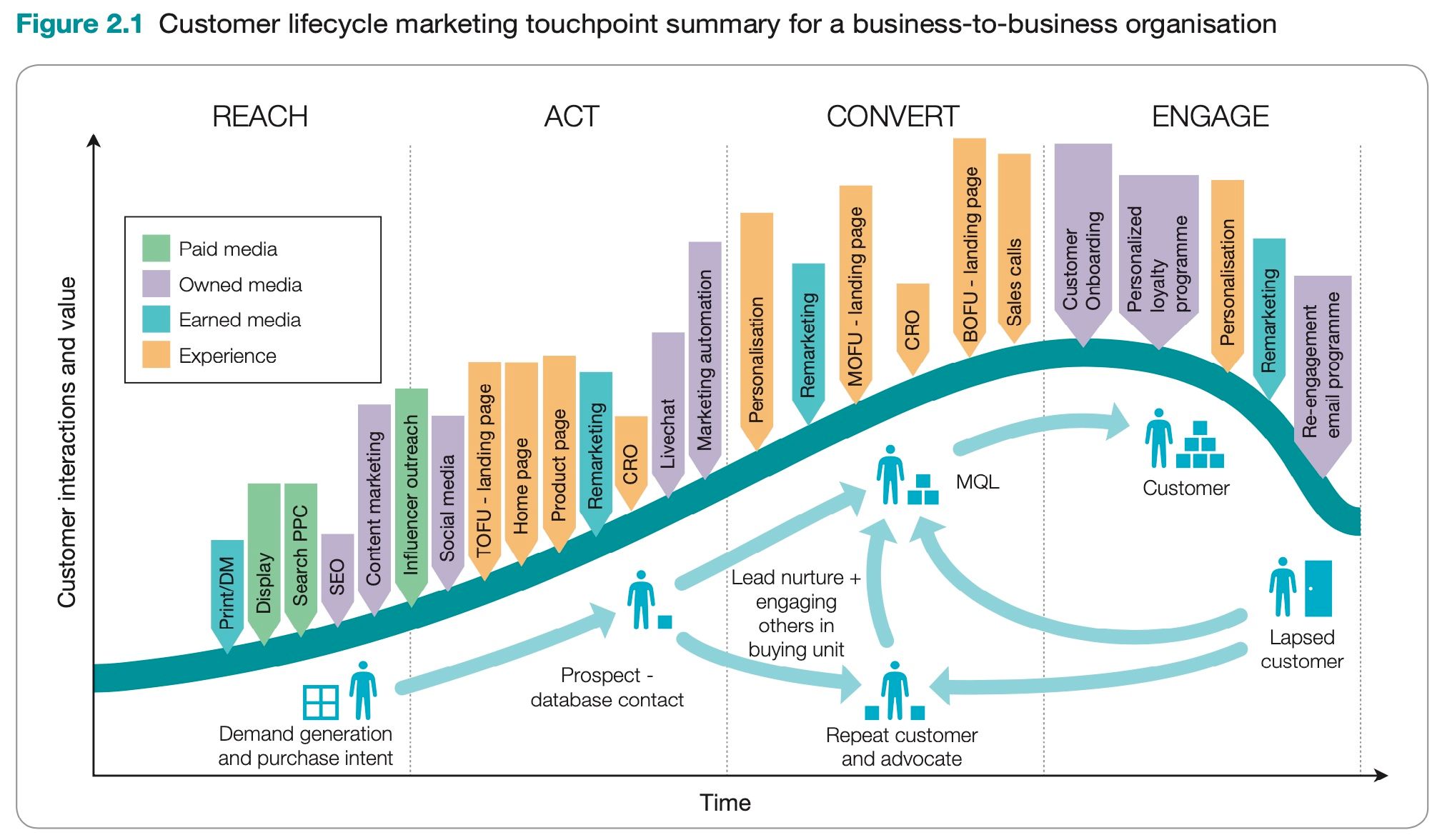
Source: Dave Chaffey and Fiona Ellis Chadwick: Digital Marketing: Strategy, Implementation and Practice book. 8th Edition
For me, the best way to think about this complexity is as an opportunity since savvy businesses can review their capabilities to manage this complexity and optimize the activities to build their capabilities, while businesses without this focus become less competitive given the importance of digital marketing. Here are five fundamental steps businesses can take to review and improve their digital marketing effectiveness supported by findings from our research.
Step 1. Develop an integrated digital marketing strategy
Given the current and future importance of digital marketing to all types of organizations, it’s a clear best practice to use a strategic approach, so that digital marketing activities are prioritized, costed, and integrated with marketing and brand strategy. A simple test of whether a strategic approach is being used is whether there is a defined plan for digital marketing. These are our findings.
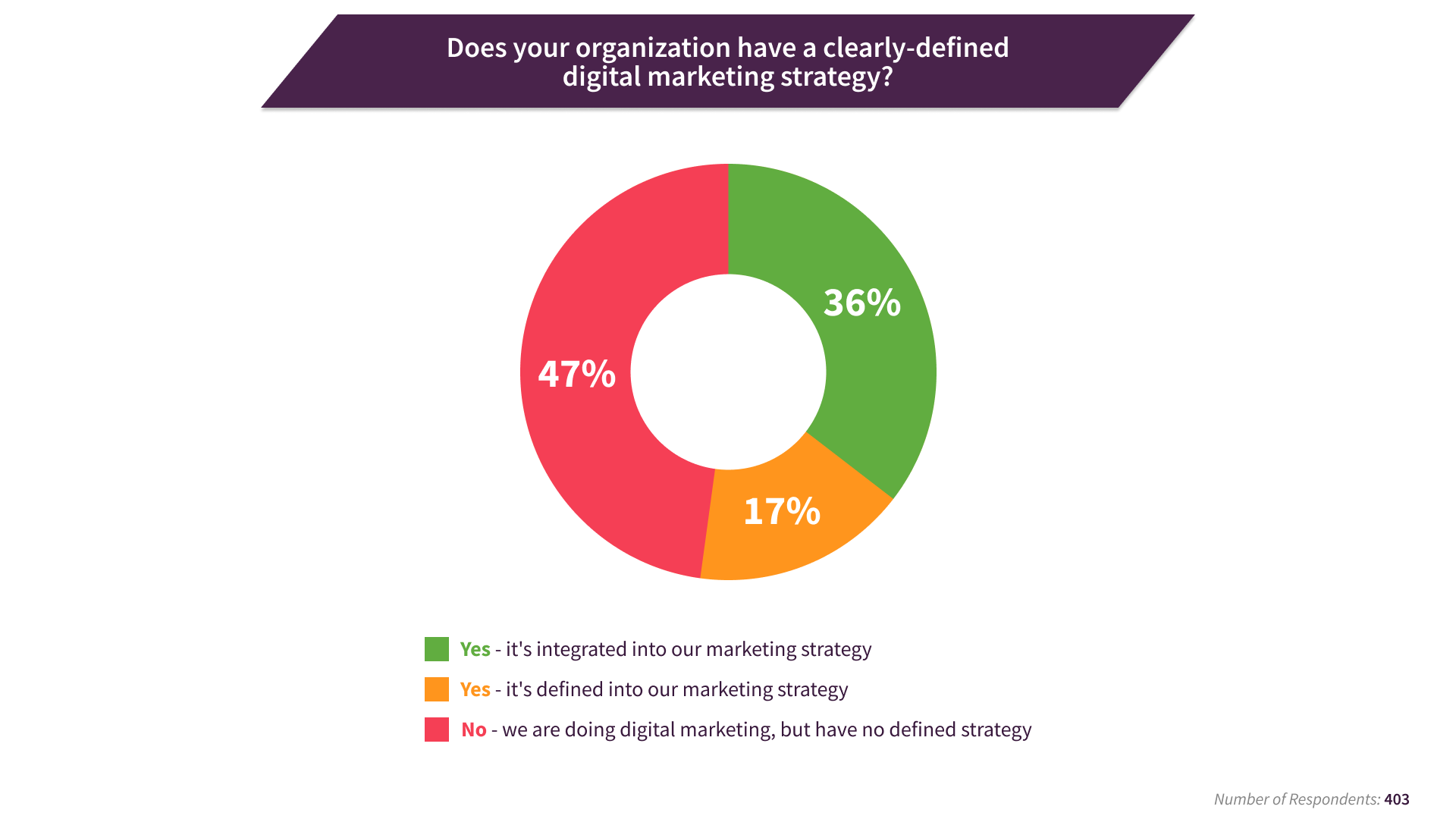
Shockingly, nearly half (47%) of businesses don’t have a digital marketing strategy, but they are doing digital marketing! Over the fifteen years we have been researching adoption of planning for digital marketing, we have found the percentage of businesses without a planned approach has remained similar, suggesting there are significant barriers to integrating planning in organizations. We asked about the main barriers in the full research.
It’s good to see that around half of businesses do have a strategic approach. The ultimate aim should be to use an integrated approach where digital marketing strategies and prioritized investments are integrated into business and marketing plans, but it can be useful initially to have a dedicated digital strategy or digital transformation plan in larger organizations, or to make the case for more investment in digital marketing before it becomes integrated.
Step 2. Prioritize investments in marketing capabilities to compete on digital
Whether companies are able to reap the potential of digital channels depends on whether they have the right capabilities in place for all the digital touchpoints that need to be managed. Capabilities for the seven pillars of marketing success we identified in the research can be reviewed for different businesses between one (low maturity) to five (maximum maturity) using the digital maturity benchmark evaluation diagnostics featured in the Executive Summary of this report.
Results for businesses in our survey show that, across all pillars, more than half of businesses are rated at lower levels of 1 to 2, showing clear room for improvement. For context, for small and medium businesses with limited resources, we recommend that level 3 is a suitable aspiration to compete. For businesses who have a high digital contribution where online leads and sales are vital to their success, we recommend that levels 4 and 5 are necessary if the case for investment is made.
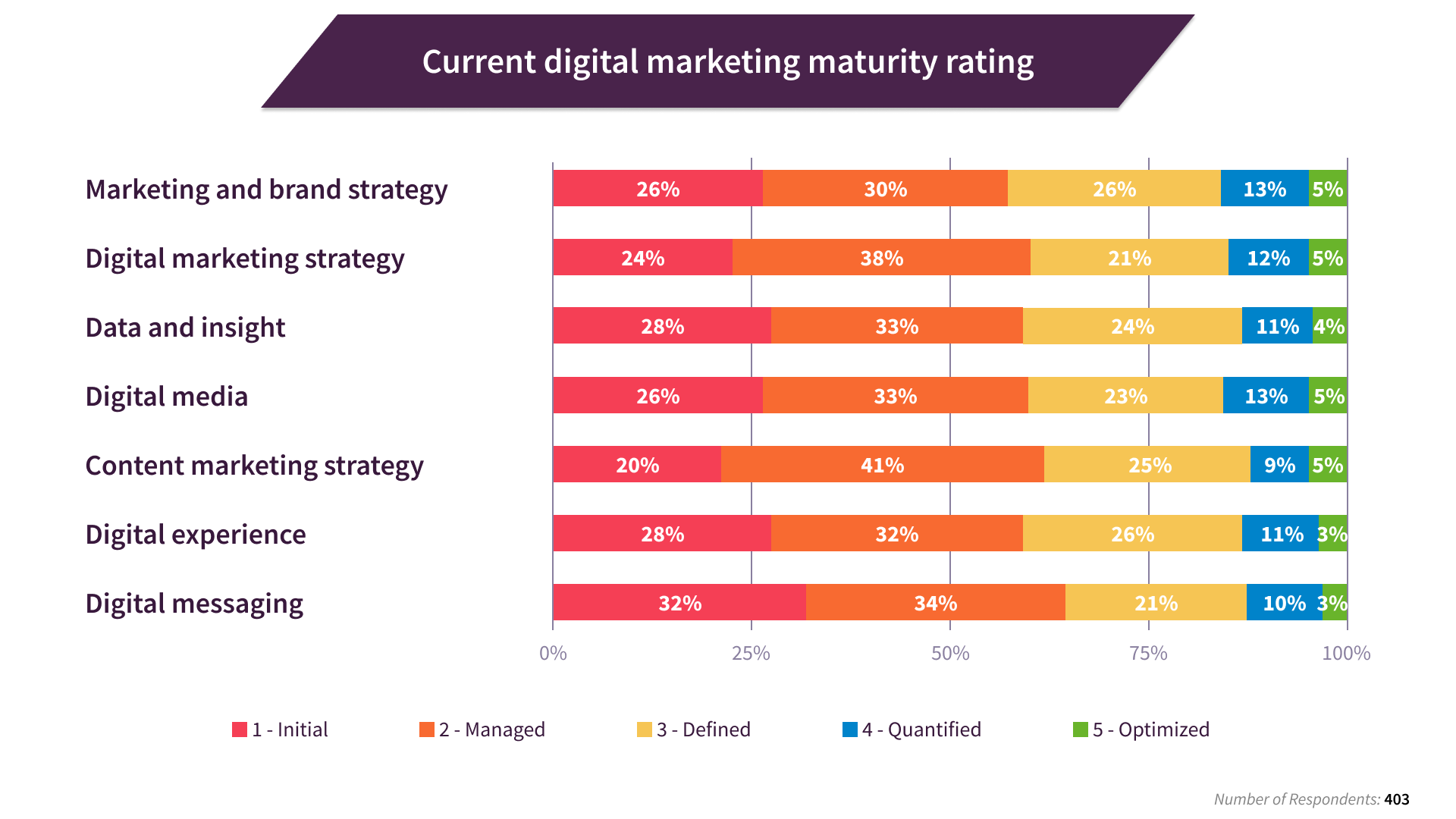
Next, to gauge how businesses are looking to improve their capabilities in the future, we asked respondents to repeat the analysis for 2024. This showed a stark contrast suggesting that many of the businesses at levels 1 and 2 are conscious that they need to improve their capabilities and are planning to invest to achieve a higher-level.
Step 3. Put a structure for insight, forecasting and evaluation in place
Best practice for managing digital marketing is to define which targets are set for digital contribution to a business and how success is tracked, for example, through digital marketing dashboards. Improving the quality of customer insight and the MarTech required to collect and analyze this is also important. The research also showed that many businesses had a poorly defined Martech stack.
At Smart Insights, we believe in an insight-based, data-driven approach to improving digital maturity through harnessing the insights that are available through digital analytics and dedicated research into the digital experience. Our RACE Growth System involves setting targets for leads, sales and profitability based on detailed forecasts which are based on channel conversion models.
To understand the extent to which businesses are using data-driven approaches, we asked about different evaluation techniques for assessing digital media and multichannel experiences.
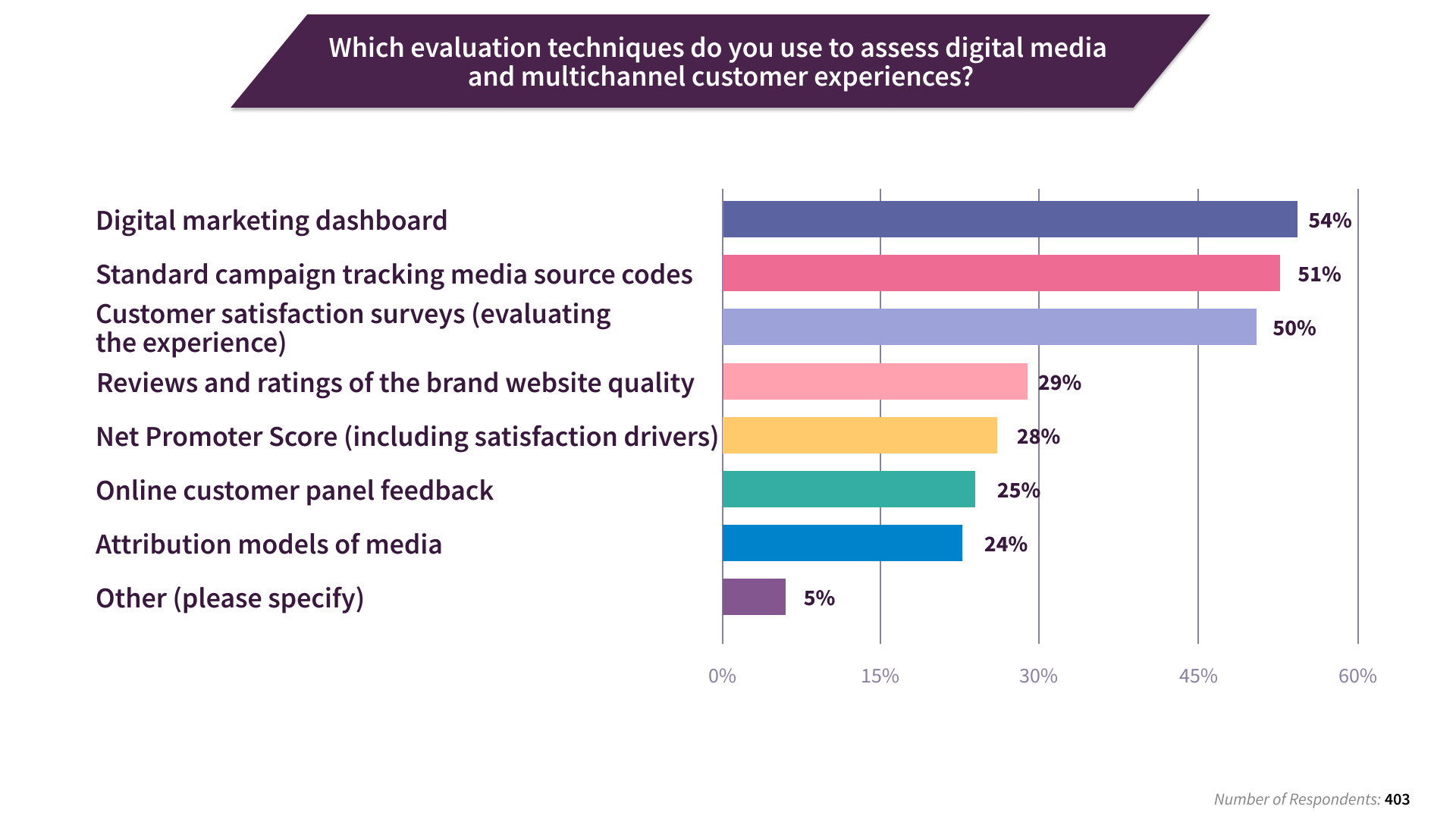
Just over half of businesses are using fundamental evaluation techniques such as using digital marketing dashboards, defined marketing source codes and digital experience assessment. However, this shows that around half of businesses aren’t using these core techniques and the majority are missing out on the other useful techniques mentioned such as NPS, customer panels and media attribution.
This year and into 2024, many businesses will be looking to improve their use of data analysis given the changes required by Google Analytics 4. Another major trend in this area is the move towards the ‘cookieless future’. Google has announced the latest update for its delayed Privacy Sandbox and Topics API for the web initiative - it is working towards deprecating third-party cookies in Chrome in the second half of 2024. Once this is implemented this will require new approaches to attribution to assess media effectiveness.
Step 4. Make the right investments in digital media and optimize activities
There are many digital platforms, but relatively few digital communications channels which are tracked, in aggregate in analytics. In our research, we asked marketers to rate these different ‘marketing channels’ into three categories of ROI to understand their effectiveness. In this analysis, we sorted the data by the channel with the highest ROI rating.
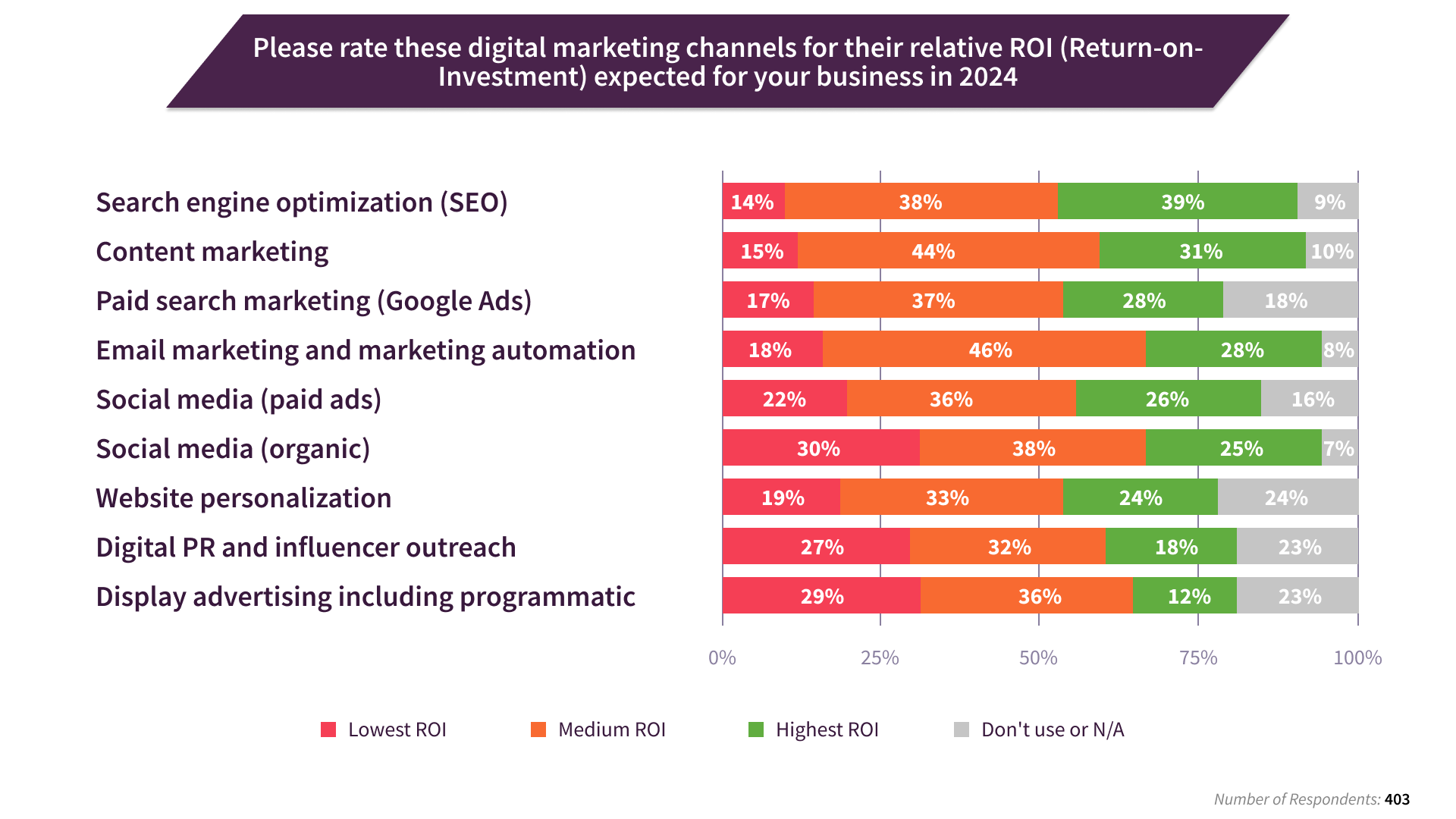
Across the businesses surveyed, organic search, Google Ads, and the closely related content marketing rate most highly, showing the need for most businesses to focus on these where there is a high search intent for their products and services. After this, email marketing is rated fourth. Email is different from the other channels since it mainly focuses on prospect and customer communications when website visitors opt-in to receive communications, so it is more about nurture to sale. Next in effectiveness we have social media with paid and organic rating similarly. Finally, we have digital PR and display advertising, which although lowest rated, remain vital for brands serving markets where there isn’t a high level of search intent or social media engagement is challenging.
Step 5. Invest in optimization of all digital communications
One of the main benefits of digital communications is that we can test and refine their effectiveness and use AI to support this (the use of AI within digital marketing is also covered in the report). To assess the extent to which insight is used to test, learn, and improve the effectiveness of digital media, experiences, content and messaging we asked marketers to categorize their approach to testing for each.
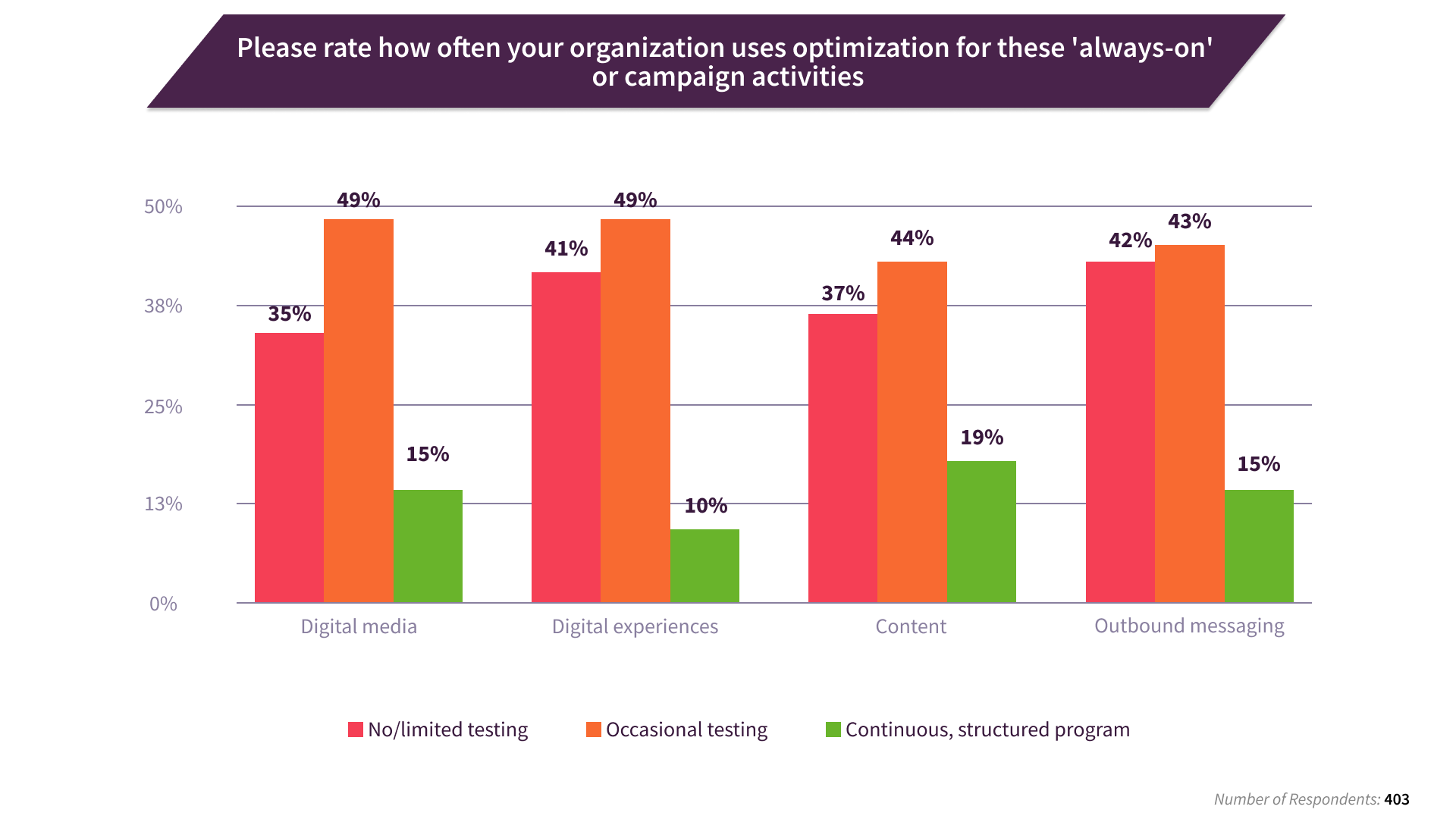
The standout finding from this chart is that a continuous, structured programme of testing is relatively uncommon despite the often-touted benefits of digital media being ‘the most measurable’. Kudos to those companies that already have a continuous programme in place, and to those that at least test occasionally (around half of the businesses).
Summary
The world of digital marketing has always been fast-paced, and as new platforms and AI tools join the market, it looks like this is not about to slow down any time soon. In order to keep your business competitive and successful, it is important to carve out the time to create a strategic approach to your marketing to ensure you are making the most of all the opportunities available to you to grow your business by improving your capabilities and testing communications effectiveness.
Latest News
-
Your Month in Marketing and eCommerce: Consumer Confidence Trends, eCommerce Growth in Romania, and the Future of AI and Retail
27 Mar 2025 Alyssia Smith, Senior Content Manager at CloserStill MediaBite-size updates on what happened in marketing and eCommerce this month, to keep you ahead of the curve and inform your campaigns. -
Ekwy Chukwuji on AI-Powered Branding, Scaling Equi Botanics, and the Next Era of Digital Marketing
27 Mar 2025Ekwy Chukwuji, founder of Equi Botanics, shares how she built an award-winning beauty brand, leveraged AI to scale her business, and became a thought leader in AI-driven marketing and automation. -
Lauren Hannifan on Co-Founding Snug, Brand-Building, and Lessons in D2C Marketing
25 Feb 2025 Laura Dazon, Marketing ManagerLauren Hannifan, co-founder of Snug, shares how she built a standout D2C brand, disrupted the furniture industry, and created impactful customer experiences on a budget. Lauren's Career and Advice ... -
Technology for Marketing Introduces 2025 Advisory Board
25 Feb 2025 Laura Dazon, Marketing ManagerTechnology for Marketing is thrilled to announce the formation of our 2025 Advisory Board – a diverse group of marketing leaders committed to reimagining the future of marketing events. Led by our S ... -
Janis Thomas on Marketing for the Over-50s and Transforming eCommerce Strategies
27 Jan 2025 Laura Dazon, Marketing ManagerJanis Thomas, Managing Director at Look Fabulous Forever, on customer-centric marketing, eCommerce growth, and engaging the over-50s demographic for lasting success. -
January 2025 in Marketing: TikTok's US Comeback, Sweaty Betty's Global Push, and Google's AI Leap
27 Jan 2025 Lily Tokmantseva, Head of Marketing & Content - eCommerce Expo, Technology for Marketing and IMRGCatch up on this month's biggest marketing stories—TikTok's uncertain future in the US, Sweaty Betty's first global campaign, and Google's latest generative AI tools for retailers. -
Carolyn Tang Kmet: eCommerce Evolution, Data-Driven Teaching, and the Future of Personalisation in Marketing
30 Oct 2024 Laura Dazon, Marketing ManagerMeet Carolyn Tang Kmet, a seasoned expert in eCommerce and digital marketing turned educator at Northwestern University, as she shares insights on personalisation, data-driven marketing, and building ... -
How To Write a B2B Marketing Strategy You Can Actually Deliver
10 Sep 2024 B2B Jade, TikTok Influencer and Founder - B2B Breakthrough AcademyIt sounds so simple, but the biggest reason most B2B companies don’t see results from their marketing efforts is that they aren’t working to a clear strategy with objectives, the right budget, and a s ... -
Zaria Parvez: Senior Global Social Media Manager at Duolingo – Creativity, Community, and Social Media Strategy
10 Sep 2024 Laura DazonMeet Zaria Parvez, the mastermind behind Duolingo's viral social media success, who grew their TikTok from 50K to over 11M followers. Discover how she transformed Duolingo into a social-first brand, c ...
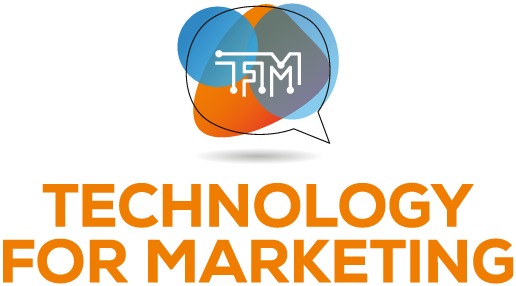
)
)
)
)
)
)
)
)
)
)
)
)

)
)
)
)
)
)
)
)
)
)
.svg)
)
